If your next STEM lesson calls for sweet biology, try this! There are several ways you can make a DNA model. We think candy has to be the best and easiest material for a 3D DNA project idea for kids of all ages. Learn about the structure of DNA, base pairs, and hydrogen bonds, and find out how to make a candy DNA model. This is fun candy science you can eat too! Look for the free printable DNA coloring sheet.
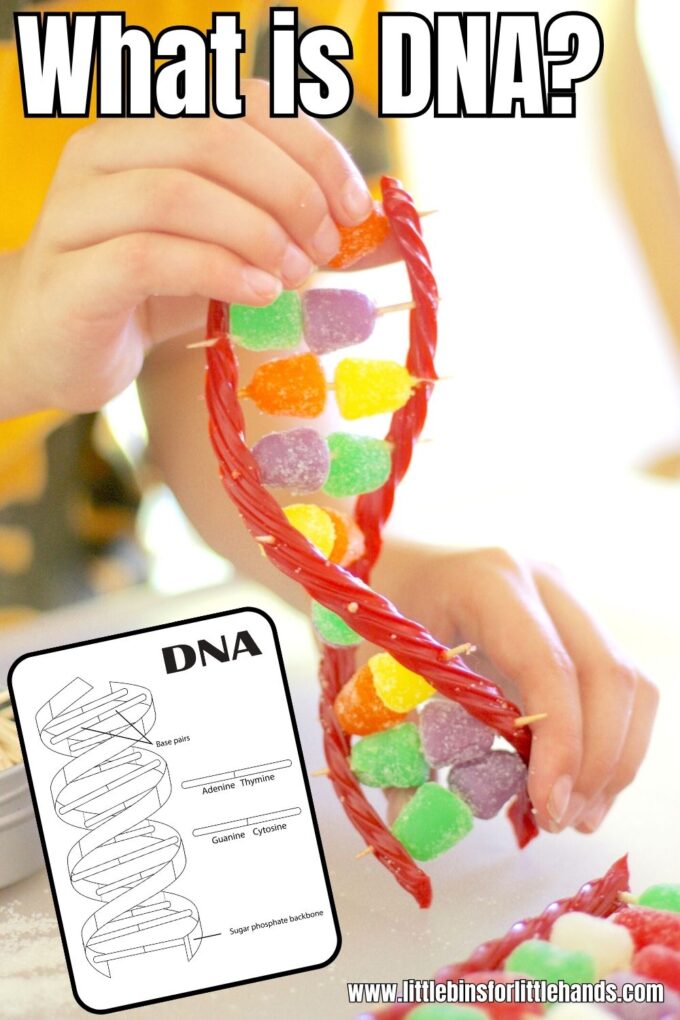
Make A DNA Model Out Of Candy
My son’s a sweet person… it must be in his DNA. Our yellow lab puppy digs holes… it must be in her DNA. After building our candy DNA model for our edible science series and having a simple conversation about DNA, my son’s little DNA jokes didn’t quit. DNA is fascinating, and making it out of candy is just as fascinating, according to my kid!
Building an edible DNA model with my son allowed us to explore and discuss the basic biology of living organisms such as ourselves. DNA is a fairly advanced topic, but there are some simple facts about DNA you can share with elementary school-age kids. Read on to find out more about the science behind our DNA model project.
What materials can you use to make a DNA model? Pick soft candy that comes in 4 different colors to represent the structure of DNA, and toothpicks are an easy way to make your own DNA model.
If you have some extra candy laying around or want to pick up a few bags for a group biology project, building a candy DNA model with the kids is a great hands-on science activity.
What Is DNA?
Our bodies are made up of trillions of different cells. These cells contain hugely important molecules called DNA within the cell’s nucleus. The function of DNA is to tell the cells what to do essentially.
DNA sends information to our cells for proper function and is also what makes us unique from one another. Learn more about the structure of animal cells!
DNA stands for deoxyribonucleic acid and it is made up of molecules called nucleotides. Each nucleotide contains a phosphate group, a sugar group and a nitrogen base.
The four types of nitrogen bases are adenine, thymine, guanine, and cytosine. These bases’ order determines the DNA’s instructions or genetic code.
Each string of DNA carries a set of instructions called genes. The gene tells the cell how to make a specific protein. Proteins are used by the cell to perform certain functions, to grow, and to survive. These genes are also passed down to offspring.
Hydrogen Bonds in DNA
Hydrogen bonds are like little bridges that hold the nucleotides together. They are special attractions between certain parts of the nucleotides. In DNA, there are four different types of nucleotides that pair up in a specific way.
One pair is called adenine (A) and thymine (T). Adenine always pairs with thymine, and two hydrogen bonds connect them. It’s like they’re holding hands with two fingers.
The other pair is called cytosine (C) and guanine (G). Cytosine always pairs with guanine, and three hydrogen bonds connect them. It’s like they’re holding hands with three fingers.
These hydrogen bonds, between A and T, and C and G, make the DNA structure stable and strong. They help keep the two strands of the DNA double helix together.
So, imagine DNA as a long ladder, where the ladder’s sides comprise the sugar and phosphate molecules, and the ladder’s rungs are the hydrogen bonds between the nucleotides. These hydrogen bonds hold the ladder together and make it strong.
Understanding hydrogen bonds in DNA is important because it helps scientists study and understand how our bodies work and how traits are passed from parents to children.
Learn more about the structure of DNA with our printable DNA coloring worksheet, and have a look at DNA up close with our Strawberry DNA Extraction Lab.
Turn It Into A Science Fair Project
Want to turn this fun candy DNA model into an easy science fair project? Check out these helpful resources…
Materials Needed For DNA Model Project
DNA Molecule Fun Fact: While the DNA molecule you build with candy is about 8 centimeters or 3 inches wide, the real DNA molecule is about 2 nanometers wide! Your DNA can stretch from the sun and back 600 times!
Here’s what you need to set up your project:
- Twizzlers or licorice (represent the backbone consisting of sugars and phosphates)
- Toothpicks
- Soft Candy (Something that comes in 4 colors but is all the same type of candy to represent the A, T, C, G nucleotides)
- 4 cups to separate candies by color
Tip: Gum drops, marshmallows, or gummy candies make the base pairs best.
Watch the video:
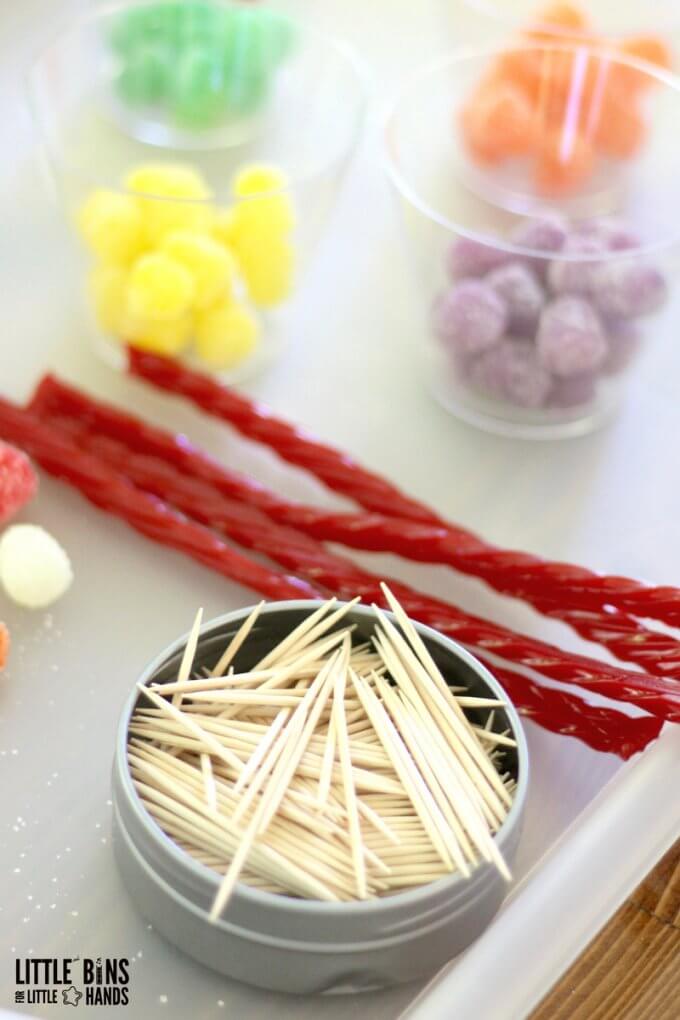
How To Make A DNA Model Out Of Candy
STEP 1. Make your base pairs. Start your candy DNA model by sorting the 4 colors of candy into separate bowls. Then you want to assign each one to a specific nucleotide. These 4 nucleotides along with the sugars and phosphates make up your double helix candy DNA model.
- Adenine
- Thymine
- Cytosine
- Guanine
REMEMBER: Adenine and Thymine are always paired together. Cytosine and Guanine are always paired together.
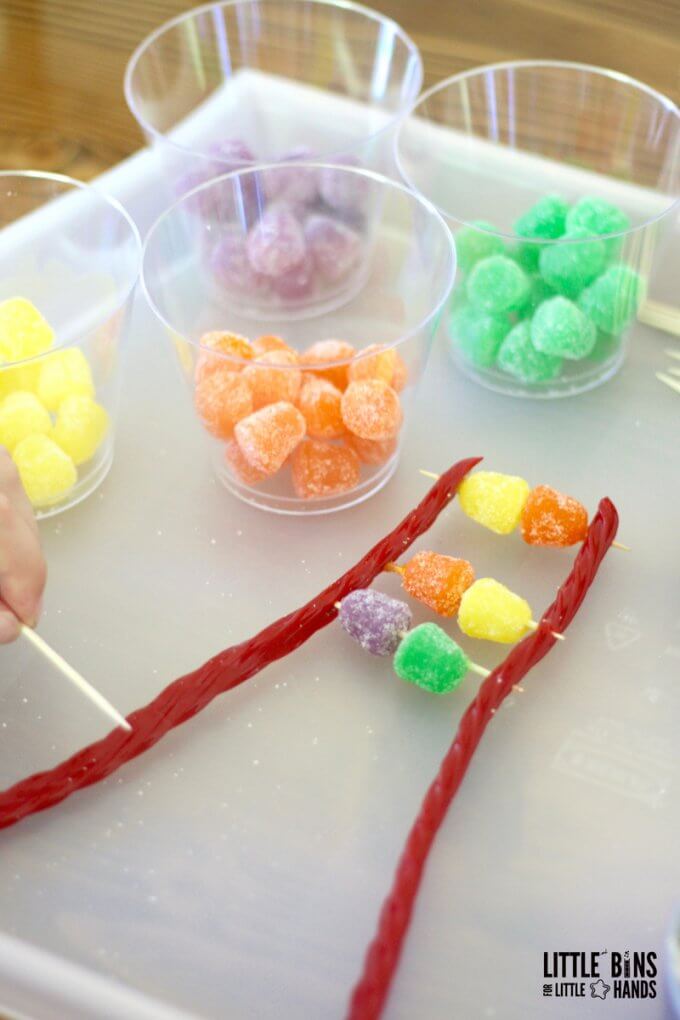
STEP 2. Now it’s time to start making up pairs for building your candy DNA model. Our DNA can not be seen with the eyes only high-powered microscopes, but DNA is long, thin molecules.
You can extract DNA from strawberries for a neat, close-up look at strawberry DNA.
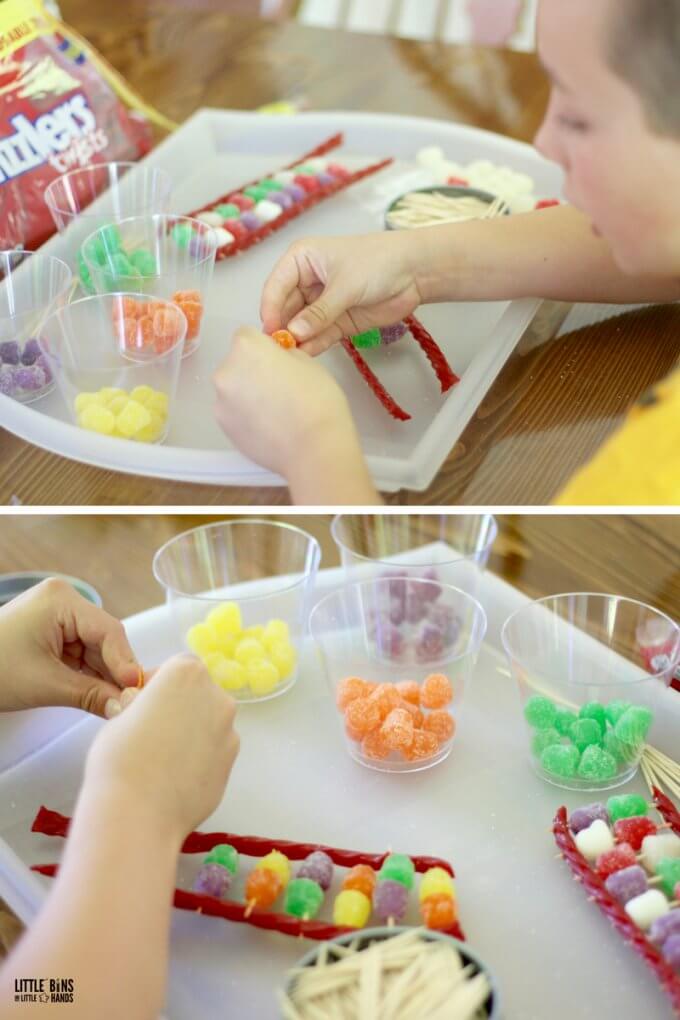
STEP 3. Now make your own unique strand of candy DNA and twist them into what is known as a double helix.
The backbone (Twizzlers) of your candy DNA model is what gives the double helix a specific shape. They also hold together the A, T, C, G nucleotides.
Endless combinations can be made, but the same pairs of nucleotides must stick together.
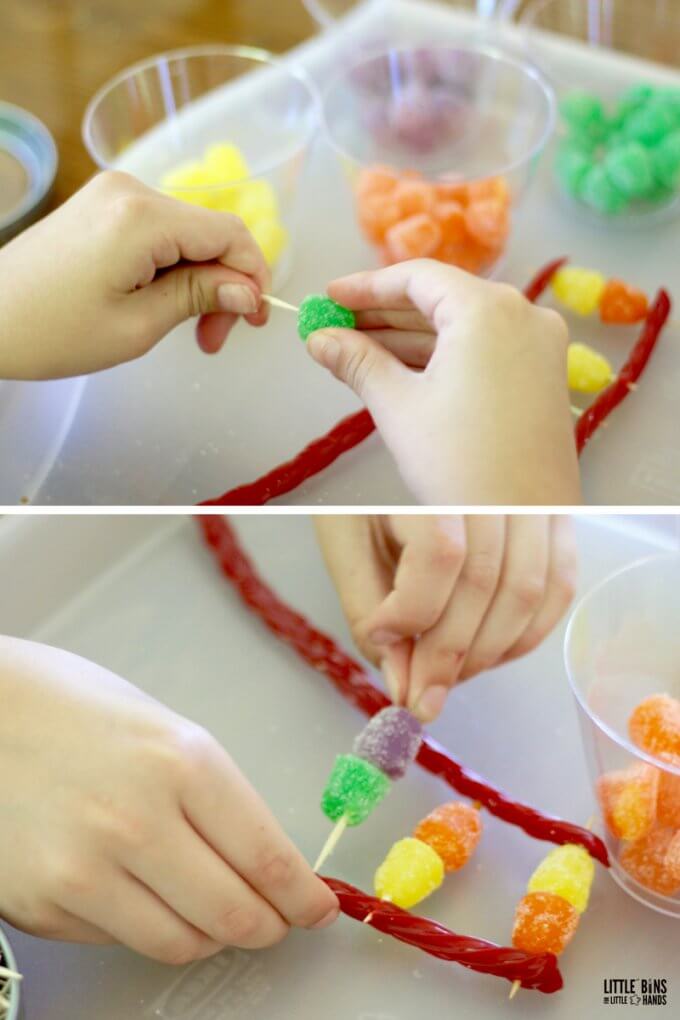
Click here for a FREE printable DNA Coloring Sheet
More Fun Science Activities With Candy
You may still have a bunch of candy left over, depending on how many strands of candy DNA models you make. Challenge your kids to…
- Build Gumdrop Structures
- Dissolving Gumdrops Experiment
- Make Gumdrop Bridge
- Growing Gummy Bears Experiment
- Skittles Experiment
90 Printable Science Projects For Kids
If you’re looking to grab all of our printable science projects in one convenient place plus exclusive worksheets and bonuses like a STEAM Project pack, our Science Project Pack is what you need! Over 300+ Pages!
- 90+ classic science activities with journal pages, supply lists, set up and process, and science information. NEW! Activity-specific observation pages!
- Best science practices posters and our original science method process folders for extra alternatives!
- Be a Collector activities pack introduces kids to the world of making collections through the eyes of a scientist. What will they collect first?
- Know the Words Science vocabulary pack includes flashcards, crosswords, and word searches that illuminate keywords in the experiments!
- My science journal writing prompts explore what it means to be a scientist!!
- Bonus STEAM Project Pack: Art meets science with doable projects!
- Bonus Quick Grab Packs for Biology, Earth Science, Chemistry, and Physics.


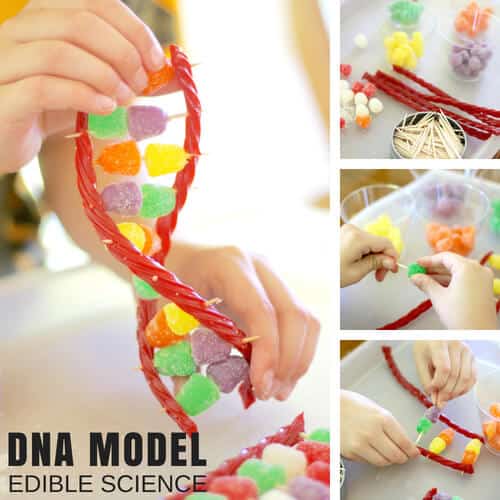
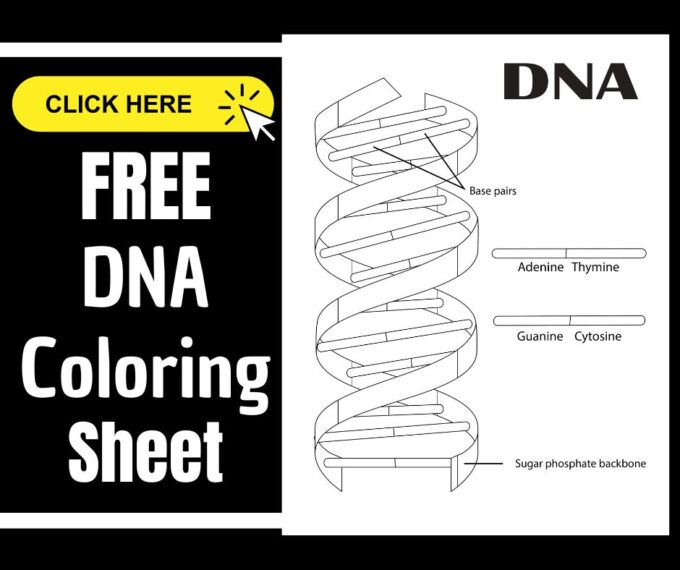







One Comment
Comments are closed.